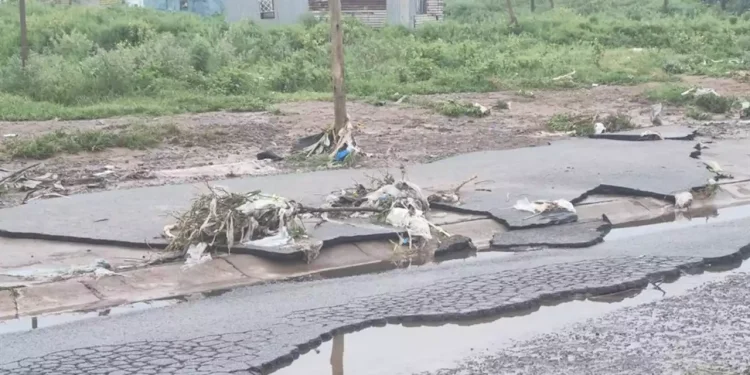By Ebi Kesiena
Kenyan Red Cross Society reports that flooding has claimed the lives of 38 individuals and forced over 11,000 people away from their homes across the country.
Head of operations at the Kenyan humanitarian agency, Venant Ndigila, said the rains have created disasters for Kenyans
“Humanitarian crises have escalated in our region. The pressing needs, particularly in shelter, are stark, with over 11,275 families unable to inhabit their homes or having lost them entirely,” he said.
Kenyan officials and humanitarian agencies have called on the population to avoid flooded areas, move to higher ground and avoid driving when it rains heavily. However, Ndigila decried that some individuals are disregarding safety advisories, potentially exacerbating the humanitarian crisis.
“We anticipate a worsening situation as the rainy season persists,” Ndigila warns. “Despite warnings, many Kenyans remain in high-risk zones, failing to preemptively relocate.”
While rains commenced in mid-March, recent days have seen a surge in their intensity. The Kenya Red Cross Society notes that many parts of the country have seen over 100 millimeters of rain in the past week alone, resulting in six fatalities.
Susan Ubbaga, a resident residing close to the Athi River in Machakos County, sharing her ordeal as the river breached its banks and invaded her home noted that she is unable to afford relocation.
“I’ve hastily elevated my belongings onto beds and tables, but I’m on standby. If the water doesn’t recede soon, I’ll have no choice but to seek refuge elsewhere.”
Recall that Kenya’s history with flooding dates back decades, marked by recurrent seasonal rains overwhelming infrastructures and displacing communities.
The country’s topography, with river systems prone to swelling during wet seasons, exacerbates the risk. Floods have devastated regions, causing loss of life, damaging homes, and disrupting livelihoods.
Efforts to mitigate flooding include early warning systems, infrastructure improvements, and community preparedness initiatives. Despite these measures, the impact of flooding persists, highlighting the ongoing challenge of managing Kenya’s hydrological vulnerabilities.




































